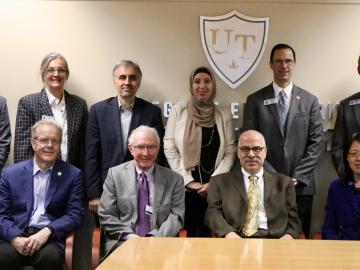
Filter News
Area of Research
- (-) Materials (62)
- (-) National Security (9)
- (-) Nuclear Science and Technology (9)
- (-) Supercomputing (55)
- Advanced Manufacturing (6)
- Biology and Environment (65)
- Biology and Soft Matter (1)
- Building Technologies (2)
- Computational Engineering (1)
- Computer Science (3)
- Electricity and Smart Grid (1)
- Energy Science (165)
- Energy Sciences (2)
- Functional Materials for Energy (2)
- Fusion and Fission (10)
- Fusion Energy (1)
- Isotopes (26)
- Materials for Computing (8)
- Mathematics (1)
- Neutron Science (13)
- Quantum information Science (1)
- Transportation Systems (2)
News Topics
- (-) Energy Storage (38)
- (-) Frontier (32)
- (-) Isotopes (17)
- (-) Transportation (21)
- 3-D Printing/Advanced Manufacturing (30)
- Advanced Reactors (16)
- Artificial Intelligence (48)
- Big Data (25)
- Bioenergy (20)
- Biology (17)
- Biomedical (23)
- Biotechnology (3)
- Buildings (8)
- Chemical Sciences (32)
- Clean Water (3)
- Composites (9)
- Computer Science (109)
- Coronavirus (19)
- Critical Materials (15)
- Cybersecurity (23)
- Environment (40)
- Exascale Computing (26)
- Fusion (17)
- Grid (15)
- High-Performance Computing (47)
- Irradiation (1)
- ITER (1)
- Machine Learning (24)
- Materials (80)
- Materials Science (84)
- Mathematics (2)
- Microscopy (29)
- Molten Salt (7)
- Nanotechnology (42)
- National Security (36)
- Neutron Science (47)
- Nuclear Energy (55)
- Partnerships (15)
- Physics (36)
- Polymers (18)
- Quantum Computing (21)
- Quantum Science (34)
- Security (15)
- Simulation (16)
- Software (1)
- Space Exploration (10)
- Summit (43)
Media Contacts

Researchers at the Department of Energy’s Oak Ridge National Laboratory are refining their design of a 3D-printed nuclear reactor core, scaling up the additive manufacturing process necessary to build it, and developing methods

The prospect of simulating a fusion plasma is a step closer to reality thanks to a new computational tool developed by scientists in fusion physics, computer science and mathematics at ORNL.

Energy storage startup SPARKZ Inc. has exclusively licensed five battery technologies from the Department of Energy’s Oak Ridge National Laboratory designed to eliminate cobalt metal in lithium-ion batteries. The advancement is aimed at accelerating the production of electric vehicles and energy storage solutions for the power grid.

The formation of lithium dendrites is still a mystery, but materials engineers study the conditions that enable dendrites and how to stop them.

To better determine the potential energy cost savings among connected homes, researchers at Oak Ridge National Laboratory developed a computer simulation to more accurately compare energy use on similar weather days.

Gina Tourassi has been appointed as director of the National Center for Computational Sciences, a division of the Computing and Computational Sciences Directorate at Oak Ridge National Laboratory.

Researchers at the Department of Energy’s Oak Ridge National Laboratory have received five 2019 R&D 100 Awards, increasing the lab’s total to 221 since the award’s inception in 1963.

ORNL and The University of Toledo have entered into a memorandum of understanding for collaborative research.

Quanex Building Products has signed a non-exclusive agreement to license a method to produce insulating material from ORNL. The low-cost material can be used as an additive to increase thermal insulation performance and improve energy efficiency when applied to a variety of building products.

A modern, healthy transportation system is vital to the nation’s economic security and the American standard of living. The U.S. Department of Energy’s Oak Ridge National Laboratory (ORNL) is engaged in a broad portfolio of scientific research for improved mobility


